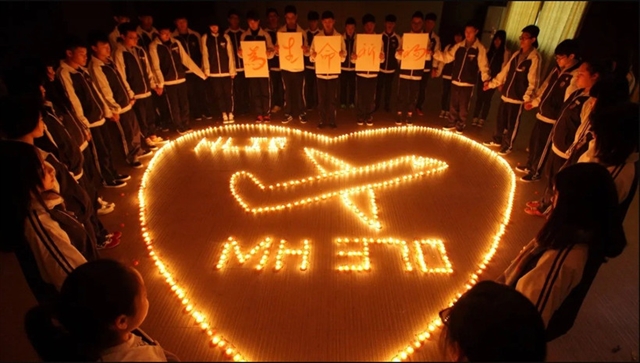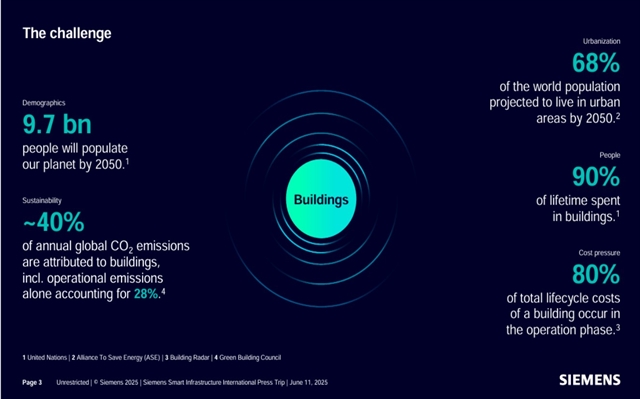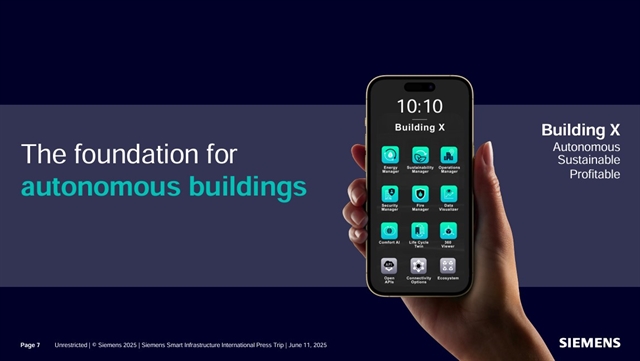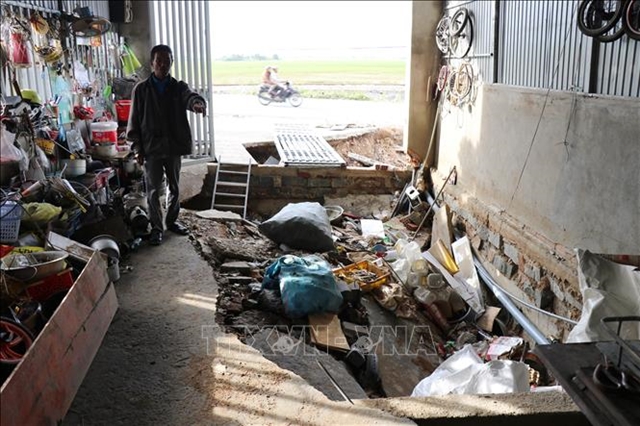 World
World
.jpg)
 |
| Pirelli 35 – one of the most iconic buildings in Milan's Porta Nuova district. — Photo courtesy of Siemens |
Ngọc Bích
In a world racing against the clock to decarbonise, the buildings around us are no longer just backdrops to daily life – they are central actors in the fight for a livable, climate-conscious future. With cities swelling and emissions soaring, the call to action is clear: buildings must become smarter, more sustainable, and self-sufficient.
This vision is not speculative fiction. It's already taking shape in the heart of Milan and through global innovations by Siemens, a company redefining what buildings can and should be.
A blueprint in Milan: Pirelli 35’s sustainable reinvention
In the Porta Nuova district of Milan, a 65-year-old landmark has been reborn. Once a conventional commercial building, Pirelli 35 has emerged as a model of smart infrastructure after an ambitious retrofit led by Siemens Smart Infrastructure and real estate firm COIMA.
Through the integration of Siemens’ Desigo CC building management system, the 11-story, 45,000-square-meter Pirelli 35 has retained its architectural heritage while embedding future-ready systems.
The entire building now functions as a fully connected, intelligent infrastructure. This centralised digital hub manages everything from lighting and Heating, Ventilation, and Air Conditioning (HVAC) to fire safety and electrical distribution.
“Pirelli 35 is a prime example of sustainable urban regeneration,” said Susanne Seitz, CEO of Buildings at Siemens Smart Infrastructure. It showcases how buildings can be modernised with electrification and digital technology to meet Europe’s 2030 net-zero targets without compromising their character, she added.
Thanks to the advanced digital systems, the building now operates with 60 per cent less energy consumption and avoids 2,000 tonnes of CO₂ emissions annually.
This project proves a powerful point: the future doesn’t require demolition – it requires transformation.
The urgency of smart sustainability
Buildings account for roughly 40 per cent of global carbon emissions while more than 80 per cent of their lifetime cost stems from maintenance and operations, Rahul Chillar, Executive Vice President, Software, Siemens Smart Infrastructure Buildings, said.
In an era where people spend 90 per cent of their lives indoors, these structures are not just energy consumers – they are the environments shaping our health, productivity, and well-being, Chillar stressed.
In this context, autonomous buildings – those capable of sensing, analysing, and responding to their environments – are key to reducing energy waste, improving comfort, and lowering operational costs.
Chillar frames it this way: “Autonomy leads to sustainability, which leads to profitability.”
In case of Pirelli 35, it was officially recognised for its performance. The building has earned the coveted LEED Platinum certification for green design and construction, WELL Gold for its focus on human health, and nZEB status (Nearly Zero-Energy Building), underscoring its ultra-low energy consumption, Stefano Corbella, COIMA’s Sustainability Officer, said.
Corbella stressed: “It’s not just about smart infrastructure – it’s about sustainability, health, and evolving urban living standards.”
Techology is viewed as a critical enabler for efficient building management and energy performance, the COIMA officer said, adding that data-driven building operation enables real-time decision-making, including optimising temperature and reducing night-time energy consumption.
According to Corbella, COIMA’s buildings now operate on fully electric systems (no fossil fuels) and leverage district geothermal loops for heating and cooling.
The buildings meet and even exceed Italy's renewable energy targets, covering more than 60 per cent of annual energy consumption with renewable sources.
 |
Digital transformation journey
However, buildings are not expected to leap into autonomy overnight.
Instead, Siemens Smart Infrastructure Buildings leader Chillar propose a “crawl, walk, run” approach. The first step – “crawl” – uses the Sustainability Manager to assess a building’s emissions, offering insights into where improvements are needed. Next, the Energy Manager identifies inefficiencies – like fans that consume excessive power or HVAC systems with outdated settings. Finally, AI enters the scene, adjusting systems dynamically for peak performance without human intervention.
This tiered approach ensures every building, regardless of age or sophistication, can enter the future on its own terms, Chillar stressed.
This phased journey allows buildings of any age – especially the 95 per cent that are brownfield – to begin their transformation without massive upfront investment.
COIMA officer Corbella said key challenges include balancing construction costs with long-term value, ensuring early adoption of advanced technologies by tenants, and adapting to evolving usage patterns.
He said that despite COIMA’s investment in forward-looking technology, tenants often take time to fully realise and use its benefits.
This transformation is no small feat, Chillar acknowledged. “If this were easy, it would’ve been done 10 years ago,” he said. But with global leaders, a flexible software backbone, and a growing partner network, Siemens is poised to redefine “how we build, manage, and experience buildings.”
Building X and the Accelerator ecosystem
Just as smartphones revolutionised daily life through platforms and apps, Siemens is enabling a similar shift in building management. With Building X as the operating system and the Accelerator ecosystem as its app store, Siemens empowers third parties to build tailored solutions for energy, maintenance, comfort, and more.
Whether it's managing occupancy-based temperature controls or ordering a graffiti-cleaning service, buildings become responsive ecosystems. This interoperability means existing systems – regardless of brand – can plug into a centralised intelligence that drives sustainability and operational excellence.
 |
Not just smart – secure and inclusive
As the climate crisis deepens and urban populations grow, the world needs buildings that aren’t burdens but allies – structures that actively contribute to human well-being and environmental health.
Thanks to advancements in AI, digital technology, and platform ecosystems, the transformation is not only possible – it’s already underway.
“Buildings aren’t just where we live – they’re how we live,” says Chillar, stressing: “Making them smart, sustainable, and autonomous is no longer optional. It’s essential.” — VNS
.jpg)



